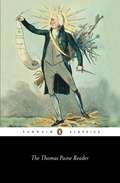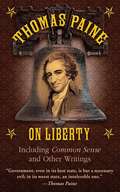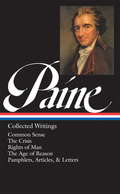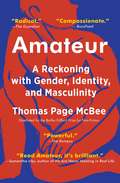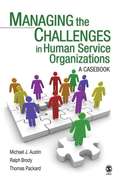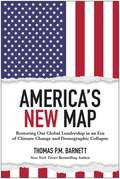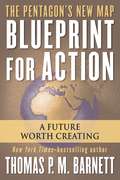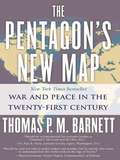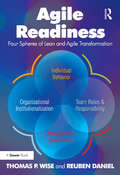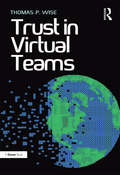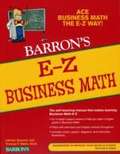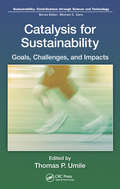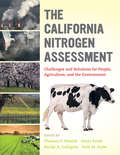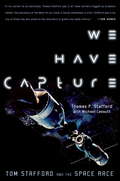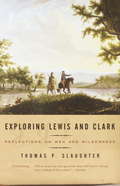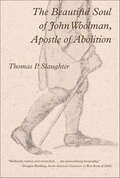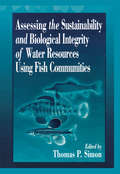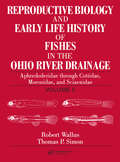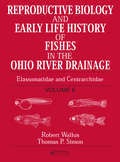- Table View
- List View
Thomas Paine Reader
by Thomas PaineThis major collection demonstrates the extent to which Thomas Paine (1737-1809) was an inspiration to the Americans in their struggle for independence, a passionate supporter of the French Revolution and perhaps the outstanding English radical writer of his age. It contains all of Paine's major works including The Rights of Man, his groundbreaking defence of the revolutionary cause in France, Common Sense, which won thousands over to the side of the American rebels, and the first part of The Age of Reason (Part One), a ferocious attack on Christianity. The shorter pieces - on capital punishment, social reform and the abolition of slavery - also confirm the great versatility and power of this master of democratic prose.
Thomas Paine on Liberty: Including Common Sense and Other Writings
by Thomas PaineThomas Paine is most famous for writing Common Sense, a pamphlet distributed during the American Revolution advocating for colonial America's independence from Great Britain. Now, collected here in a beautiful gift book volume are excerpts from this important historical American document, as well as several of his other writings.Paine believed in more than just freedom in the form of revolution and overthrowing governments. He also believed in freedom from oppressive and organized religions and monopolies. Included in this book are passages taken from The Age of Reason and The Rights of Man, as well as letters to George Washington, Benjamin Rush, and Samuel Adams, and pamphlets such as "The American Crisis" and "Agrarian Justice." Throughout his writings, Paine provides excellent and timeless wisdom on attaining liberty and living a democratic life.
Thomas Paine: Common Sense / The American Crisis / Rights of
by Thomas PaineThomas Paine was the impassioned democratic voice of the Age of Revolution, and this volume brings together his best-known works: Common Sense, The American Crisis, Rights of Man, The Age of Reason, along with a selection of letters, articles and pamphlets that emphasizes Paine's American years. "I know not whether any man in the world," wrote John Adams in 1805, "has had more influence on its inhabitants or affairs for the last thirty years than Tom Paine." The impassioned democratic voice of the Age of Revolution, Paine wrote for his mass audience with vigor, clarity, and "common sense." This Library of America volume is the first major new edition of his work in 50 years, and the most comprehensive single-volume collection of his writings available. Paine came to America in 1774 at age 37 after a life of obscurity and failure in England. Within fourteen months he published Common Sense, the most influential pamphlet for the American Revolution, and began a career that would see him prosecuted in England, imprisoned and nearly executed in France, and hailed and reviled in the American nation he helped create. In Common Sense, Paine set forth an inspiring vision of an independent America as an asylum for freedom and an example of popular self-government in a world oppressed by despotism and hereditary privilege. The American Crisis, begun during "the times that try men's souls" in 1776, is a masterpiece of popular pamphleteering in which Paine vividly reports current developments, taunts and ridicules British adversaries, and enjoins his readers to remember the immense stakes of their struggle. Among the many other items included in the volume are the combative "Forester" letters, written in a reply to a Tory critic of Common Sense, and several pieces concerning the French Revolution, including an incisive argument against executing Louis XVI. Rights of Man (1791-1792), written in response to Edmund Burke's attacks on the French Revolution, is a bold vision of an egalitarian society founded on natural rights and unbound by tradition. Paine's detailed proposal for government assistance to the poor inspired generations of subsequent radicals and reformers. The Age of Reason (1794-1795), Paine's most controversial work, is an unrestrained assault on the authority of the Bible and a fervent defense of the benevolent God of deism. Included in this volume are a detailed chronology of Paine's life, informative notes, an essay on the complex printing history of Paine's work, and an index.
Man Alive: A True Story of Violence, Forgiveness and Becoming a Man
by Thomas Page McbeeWhat does it really mean to be a man?In Man Alive, Thomas Page McBee attempts to answer that question by focusing on two of the men who most impacted his life&mash;one, his otherwise ordinary father who abused him as a child, and the other, a mugger who almost killed him. Standing at the brink of the life-changing decision to transition from female to male, McBee seeks to understand these examples of flawed manhood and tells us how a brush with violence sent him on the quest to untangle a sinister past, and freed him to become the man he was meant to be.Man Alive engages an extraordinary personal story to tell a universal one-how we all struggle to create ourselves, and how this struggle often requires risks. Far from a transgender transition tell-all, Man Alive grapples with the larger questions of legacy and forgiveness, love and violence, agency and invisibility.
Amateur: A True Story About What Makes a Man
by Thomas Page McBee*Shortlisted for the Baillie Gifford Prize for Nonfiction *Shortlisted for the Lambda Literary Award *Shortlisted for the Wellcome Book Prize One of The Times UK&’s Best Memoirs of 2018, BuzzFeed&’s Best Nonfiction of 2018, Autostraddle&’s Best LGBT Books of 2018, and 52 Insight&’s Favorite Nonfiction Books of 2018 A &“no-holds-barred examination of masculinity&” (BuzzFeed) and violence from award-winning author Thomas Page McBee.In this &“refreshing and radical&” (The Guardian) narrative, Thomas McBee, a trans man, sets out to uncover what makes a man—and what being a &“good&” man even means—through his experience training for and fighting in a charity boxing match at Madison Square Garden. A self-described &“amateur&” at masculinity, McBee embarks on a wide-ranging exploration of gender in society, examining sexism, toxic masculinity, and privilege. As he questions the limitations of gender roles and the roots of masculine aggression, he finds intimacy, hope, and even love in the experience of boxing and in his role as a man in the world. Despite personal history and cultural expectations, &“Amateur is a reminder that the individual can still come forward and fight&” (The A.V. Club). &“Sharp and precise, open and honest,&” (Women&’s Review of Books), McBee&’s writing asks questions &“relevant to all people, trans or not&” (New York Newsday). Through interviews with experts in neuroscience, sociology, and critical race theory, he constructs a deft and thoughtful examination of the role of men in contemporary society. Amateur is a graceful and uncompromising look at gender by a fearless, fiercely honest writer.
Managing the Challenges in Human Service Organizations: A Casebook
by Ralph Brody Michael J. Austin Thomas PackardManaging the Challenges in Human Service Organizations: A Casebook offers current and aspiring human service managers a view into the kinds of experiences they will likely encounter to better prepare them for the world they are about to enter. The cases are inspired by real situations and are designed to encourage students to determine how they would act and work towards a resolution of the dilemmas presented. Key Features Simulates administrative dilemmas through cases that offer different aspects of agency administration and replicate aspects of actual practice Levels the learning field for students entering graduate human service management programs with different managerial experiences Orients students to the challenges of management by helping them develop mental models linked to the values of client-centered administration Helps students develop a beginning sense of competence and understanding of managerial work while refining their analytic skills Offers the opportunity for repeated learning opportunities using different analytical frameworks Supplements fieldwork by providing more time to reflect and consider a broader array of alternatives than is found in most field experiences Intended Audience This book is ideally suited as a supplemental text for advanced undergraduate and graduate courses in social work and counseling, as well as a much-needed reference for human services supervisors and practitioners.
America's New Map: Restoring Our Global Leadership in an Era of Climate Change and Demographic Collapse
by Thomas P.M. BarnettThree tectonic and inevitable shifts have left the world at a crossroads. North America is poised to either re-emerge as a global leader, or turn back in time, ceding power and influence to competitors. The 21st century unleashed unprecedented changes across the globe—to its climate, to the demographic makeup of its nations, and to the very nature of allegiance in the digital age. With its global influence waning, America must reevaluate its approach to globalization if it wishes to remain a leader. In America&’s New Map: Restoring Global Leadership in an Era of Climate Change and Demographic Collapse, Thomas P.M. Barnett, bestselling author of The Pentagon&’s New Map: War and Peace in the Twenty-First Century and acclaimed geo-strategist, offers seven throughlines to frame and redefine the ambitions and posture of these United States, setting our Union on a bold-but-entirely-familiar national trajectory. In these pages, Barnett offers a deep, yet accessible dive into the three shifts that have lead us to this point: As climate change ravages countries closest to the equator, global dynamics are shifting from an East-West emphasis to North-South in the greatest geopolitical transformation our world has yet experienced—and the Western Hemisphere is far better positioned to exploit this radical reorientation than the East. Aging demographics worldwide favor more slowly aging nations, including the US, while challenging rapidly aging nations like China, incentivizing countries best to delay that transition by integrating younger, faster-growing populations into their ranks. In combination, these two tectonic forces collide with a third: the exploding consumption of an expanding—and now majority—global middle class, the bulk of whom reside along the increasingly unstable North-South frontier. Taking every variable of these unique circumstances into account, America&’s New Map charts a path toward a bigger and better United States. We will all be living in somebody&’s world come mid-century—this book tells Americans how to make sure it is one we can recognize as our own.
Blueprint for Action
by Thomas P.M. BarnettThe Pentagon's New Map was one of the most talked-about books of the year - a fundamental reexamination of war and peace in the post-9/11 world that provided a compelling vision of the future. Now, senior advisor and military analyst Thomas P.M. Barnett explores our possible long- and short-term relations with such nations and regions as Iran, Iraq, and the Middle East, China and North Korea, Latin America and Africa, while outlining the strategies to pursue, the entities to create, and the pitfalls to overcome. If his first book was "a compelling framework for confronting twenty-first century problems" (Business Week), Barnett's new book is something more - a powerful road map through a chaotic and uncertain world to "a future worth creating."
Blueprint for Action: A Future Worth Creating
by Thomas P.M. BarnettThe Pentagon's New Map was one of the most talked-about books of the year - a fundamental reexamination of war and peace in the post-9/11 world that provided a compelling vision of the future. Now, senior advisor and military analyst Thomas P.M. Barnett explores our possible long- and short-term relations with such nations and regions as Iran, Iraq, and the Middle East, China and North Korea, Latin America and Africa, while outlining the strategies to pursue, the entities to create, and the pitfalls to overcome. If his first book was "a compelling framework for confronting twenty-first century problems" (Business Week), Barnett's new book is something more - a powerful road map through a chaotic and uncertain world to "a future worth creating."
The Pentagon's New Map
by Thomas P.M. BarnettSince the end of the Cold War, America's national security establishment has been searching for a new operating theory to explain how this seemingly "chaotic" world actually works. Gone is the clash of blocs, but replaced by what? Thomas Barnett has the answers. A senior military analyst with the U.S. Naval War College, he has given a constant stream of briefings over the past few years, and particularly since 9/11, to the highest of high-level civilian and military policymakers-and now he gives it to you. The Pentagon's New Map is a cutting-edge approach to globalization that combines security, economic, political, and cultural factors to do no less than predict and explain the nature of war and peace in the twenty-first century. Building on the works of Friedman, Huntington, and Fukuyama, and then taking a leap beyond, Barnett crystallizes recent American military history and strategy, sets the parameters for where our forces will likely be headed in the future, outlines the unique role that America can and will play in establishing international stability-and provides much-needed hope at a crucial yet uncertain time in world history. For anyone seeking to understand the Iraqs, Afghanistans, and Liberias of the present and future, the intimate new links between foreign policy and national security, and the operational realities of the world as it exists today, The Pentagon's New Map is a template, a Rosetta stone. Agree with it, disagree with it, argue with it-there is no book more essential for 2004 and beyond.
The Pentagon's New Map
by Thomas P.M. BarnettSince the end of the Cold War, America's national security establishment has been searching for a new operating theory to explain how this seemingly "chaotic" world actually works. Gone is the clash of blocs, but replaced by what? Thomas Barnett has the answers. A senior military analyst with the U.S. Naval War College, he has given a constant stream of briefings over the past few years, and particularly since 9/11, to the highest of high-level civilian and military policymakers-and now he gives it to you. The Pentagon's New Map is a cutting-edge approach to globalization that combines security, economic, political, and cultural factors to do no less than predict and explain the nature of war and peace in the twenty-first century. Building on the works of Friedman, Huntington, and Fukuyama, and then taking a leap beyond, Barnett crystallizes recent American military history and strategy, sets the parameters for where our forces will likely be headed in the future, outlines the unique role that America can and will play in establishing international stability-and provides much-needed hope at a crucial yet uncertain time in world history. For anyone seeking to understand the Iraqs, Afghanistans, and Liberias of the present and future, the intimate new links between foreign policy and national security, and the operational realities of the world as it exists today, The Pentagon's New Map is a template, a Rosetta stone. Agree with it, disagree with it, argue with it-there is no book more essential for 2004 and beyond.
Agile Readiness: Four Spheres of Lean and Agile Transformation
by Thomas P. Wise Reuben DanielAgile Readiness is designed to provide guidance to the manager or business leader in establishing a successful environment to enable fast moving agile and lean project methods focused on business systems transformation. Agile and lean offer huge potential as methods for reducing risk and costs, delivering early benefits and ensuring IT projects genuinely deliver the business transformation benefits that they promise at the outset. The conundrum for many organizations is that without a change of organizational culture, agile and lean methods are very unlikely to be adopted successfully in traditional organizations. Thus, the struggle that many (if not most) managers and executives face is not in how agile or lean development works, but in how to make agile and lean methods successful when working beyond software development. Thomas P. Wise and Reuben Daniel provide a clear view of the struggles and remedies. Their text uses simple ground floor experiences to illustrate the practices and behaviors necessary to create highly successful and effective agile and lean business systems transformation teams. In this book the reader will discover organizational strategies that build strong teams, an environment of trust, and project selection and planning strategies to create an environment of enablement in which agile and lean teams thrive.
Trust in Virtual Teams: Organization, Strategies and Assurance for Successful Projects
by Thomas P. WiseAs projects become more complex and the project teams are more geographically and culturally dispersed, so strong, trusting relationships come to the fore. Trust provides the security that enables project teams to work together effectively, even when they face project-threatening problems and challenges. Because today’s team members work virtually as much by choice as by geographic necessity, business leaders must understand how team relationships such as trust, cross-divisional projects, and how offshore team participation are all positively motivated by a solid quality assurance program. Offering real world solutions, Trust in Virtual Teams provides a clear view of how virtual projects can succeed, and how quality assurance compliments and promotes effective organizational design and project management to build solid trust relationships. Dr Wise combines the latest research in virtual team trust with simple and proven quality methods. He builds upon more than 20 years of experience in quality and project work to guide team managers in creating high performing project teams. Our understanding of the role human factors play in project performance and project resilience continues to grow. As it does, so does our need to address the behaviors and culture that enable good performance. Tom Wise’s book is a thoughtful and pragmatic guide to help project teams and managers do just that.
Barron's E-Z Business Mathematics
by Thomas P. Walsh Calvin GooznerThis self-teaching manual reviews arithmetic skills as they apply to business records and functions. Topics reviewed include fractions, decimals, calculating percentages, the fundamentals of statistics and business graphics, measurements in the English and metric systems, and applications of mathematics to banking, investing, loans, and setting up a business. Barron's continues its ongoing project of updating, improving, and giving handsome new designs to its popular list of Easy Way titles, now re-named Barron's E-Z Series. The new cover designs reflect the books' brand-new page layouts, which feature extensive two-color treatment, a fresh, modern typeface, and more graphic material than ever. Charts, graphs, diagrams, instructive line illustrations, and where appropriate, amusing cartoons help to make learning E-Z. Barron's E-Z books are self-teaching manuals focused to improve students' grades across a wide array of academic and practical subjects. For most subjects, the skill level ranges between senior high school and college-101 standards. In addition to their self-teaching value, these books are also widely used as textbooks or textbook supplements in classroom settings. E-Z books review their subjects in detail, using both short quizzes and longer tests to help students gauge their learning progress. All exercises and tests come with answers. Subject heads and key phrases are set in a second color as an easy reference aid.
Catalysis for Sustainability: Goals, Challenges, and Impacts (ISSN)
by Thomas P. UmileCatalysis for Sustainability: Goals, Challenges, and Impacts explores the intersection between catalytic science and sustainable technologies as a means to addressing current economic, social, and environmental problems. These problems include harnessing alternative energy sources, pollution prevention and remediation, and the manufacturing of comm
The California Nitrogen Assessment: Challenges and Solutions for People, Agriculture, and the Environment
by Thomas P. TomichNitrogen is indispensable to all life on Earth. However, humans now dominate the nitrogen cycle, and nitrogen emissions from human activity have real costs: water and air pollution, climate change, and detrimental effects on human health, biodiversity, and natural habitats. Too little nitrogen limits ecosystem processes, while too much nitrogen transforms ecosystems profoundly. The California Nitrogen Assessment is the first comprehensive account of nitrogen flows, practices, and policies for California, encompassing all nitrogen flows--not just those associated with agriculture--and their impacts on ecosystem services and human wellbeing. How California handles nitrogen issues will be of interest nationally and internationally, and the goal of the assessment is to link science with action and to produce information that affects both future policy and solutions for addressing nitrogen pollution. This book also provides a model for application of integrated ecosystem assessment methods at regional and state (subnational) levels.
We Have Capture
by Michael Cassutt Thomas P. StaffordWhat an amazing career. Tom Stafford attained the highest speed ever reached by a test pilot (28,547 mph), carried a cosmonaut's coffin with Soviet Secretary Leonid Brezhnev, led the team that designed the sequence of missions leading to the original lunar landing, and drafted the original specifications for the B-2 stealth bomber on a piece of hotel stationery. But his crowning achievement was surely his role as America's unofficial space ambassador to the Soviet Union during the darkest days of the Cold War.In this lively memoir written with Michael Cassutt, Stafford begins by recounting his early successes as a test pilot, Gemini and Apollo astronaut, and USAF general. As President Nixon's stand-in at the 1971 Soviet funeral for three cosmonauts, he opened the door to the possibility of cooperation in space between Russians and Americans. Stafford's Apollo-Soyuz team was the first group of Americans to work at the cosmonaut training center, and also the first to visit Baikonur, the top-secret Soviet launch center, in 1974. His 17 July 1975 "handshake in space" with Soviet commander Alexei Leonov (who became a lifelong friend) proved to the world that the two opposing countries could indeed work successfully together. Stafford has continued in this leadership role right up to the present, participating in designing and evaluating the Space Shuttle, Mir, and the International Space Station. He is truly an American hero who personifies the broadest spirit of exploration and cooperation.
Exploring Lewis and Clark: Reflections on Men and Wilderness
by Thomas P. SlaughterMost Americans know that Meriwether Lewis and William Clark led our nation's first trans-continental exploratory expedition, which was sent west by President Thomas Jefferson in 1803. Their journey is one of the most celebrated events in American history and one of the most written about. But most of us do not know any more than what the explorers told us, or what they wanted readers of their voluminous journals to know, or anything other than what they understood about themselves and their wilderness experiences. Exploring Lewis and Clark probes beneath the traditional narrative of the journey, looking beyond the perspectives of the explorers themselves to those of the woman and the men who accompanied them, as well as of the Indians who met them along the way. It reexamines the journals and what they suggest about Lewis's and Clark's misinterpretations of the worlds they passed through and the people in them. Thomas Slaughter portrays Lewis and Clark not as heroes but as men--brave, bound by cultural prejudices and blindly hell-bent on achieving their goal. He searches for the woman Sacajawea rather than the icon that she has become. He seeks the historical rather than the legendary York, Clark's slave. He discovers what the various tribes made of the expedition, including the notion that this multiracial, multiethnic group was embarked on a search for spiritual meaning. Thomas Slaughter shines an entirely new light on an event basic to our understanding of ourselves. He has given us an important work of investigative history.
The Beautiful Soul of John Woolman, Apostle of Abolition
by Thomas P. SlaughterA biography of the famous eighteenth-century Quaker whose abolitionist fervor and spiritual practice made him a model for generations of AmericansJohn Woolman (1720–72) was perhaps the most significant American of his age, though he was not a famous politician, general, or man of letters, and never held public office. A humble Quaker tailor in New Jersey, he became a prophetic voice for the entire Anglo-American world when he denounced the evils of slavery in Quaker meetings, then in essays and his Journal, first published in 1774. In this illuminating new biography, Thomas P. Slaughter goes behind those famous texts to locate the sources of Woolman's political and spiritual power. Slaughter's penetrating work shows how this plainspoken mystic transformed himself into a prophetic, unforgettable figure. Devoting himself to extremes of self-purification—dressing only in white, refusing to ride horses or in horse-drawn carriages—Woolman might briefly puzzle people; but his preaching against slavery, rum, tea, silver, forced labor, war taxes, and rampant consumerism was infused with a benign confidence that ordinary people could achieve spiritual perfection, and this goodness gave his message persuasive power and enduring influence. Placing Woolman in the full context of his times, Slaughter paints the portrait of a hero—and not just for the Quakers, social reformers, labor organizers, socialists, and peace advocates who have long admired him. He was an extraordinary original, an American for the ages.
Assessing the Sustainability and Biological Integrity of Water Resources Using Fish Communities
by Thomas P. SimonThis book examines the application of fish community characteristics to evaluate the sustainability and biological integrity of freshwaters. Topics include perspectives on use of fish communities as environmental indicators in program development, collaboration, and partnership forming; influence of specific taxa on assessment of the IBI; regional applications for areas where the IBI had not previously been developed; and specific applications of the IBI developed for coldwater streams, inland lakes, Great Lakes, reservoirs, and tailwaters.
Biological Response Signatures: Indicator Patterns Using Aquatic Communities
by Thomas P. SimonThe use of environmental assessment procedures within monitoring frameworks demands that there be some relevancy to the decisions that management agencies make using biological criteria. These biological criteria standards are the basis for environmental indicators, which provide a direct measure of environmental quality. Biological Response Signat
Reproductive Biology and Early Life History of Fishes in the Ohio River Drainage: Aphredoderidae through Cottidae, Moronidae, and Sciaenidae, Volume 5
by Robert Wallus Thomas P. SimonThis seven-volume series is the most extensive treatise on early life histories of the freshwater fishes of North America. It represents the state-of-the-art in fishery biology and provides a systematic approach to the study of early life histories of all the fishes in this region. Each volume contains distinguishing characteristics and a pictorial
Reproductive Biology and Early Life History of Fishes in the Ohio River Drainage: Elassomatidae and Centrarchidae, Volume 6
by Thomas P. Simon Robert WallusThis seven-volume series is the most extensive treatise on early life histories of the freshwater fishes of North America. It represents the state-of-the-art in fishery biology and provides a systematic approach to the study of early life histories of all the fishes in this region. Each volume contains distinguishing characteristics and a pictorial

